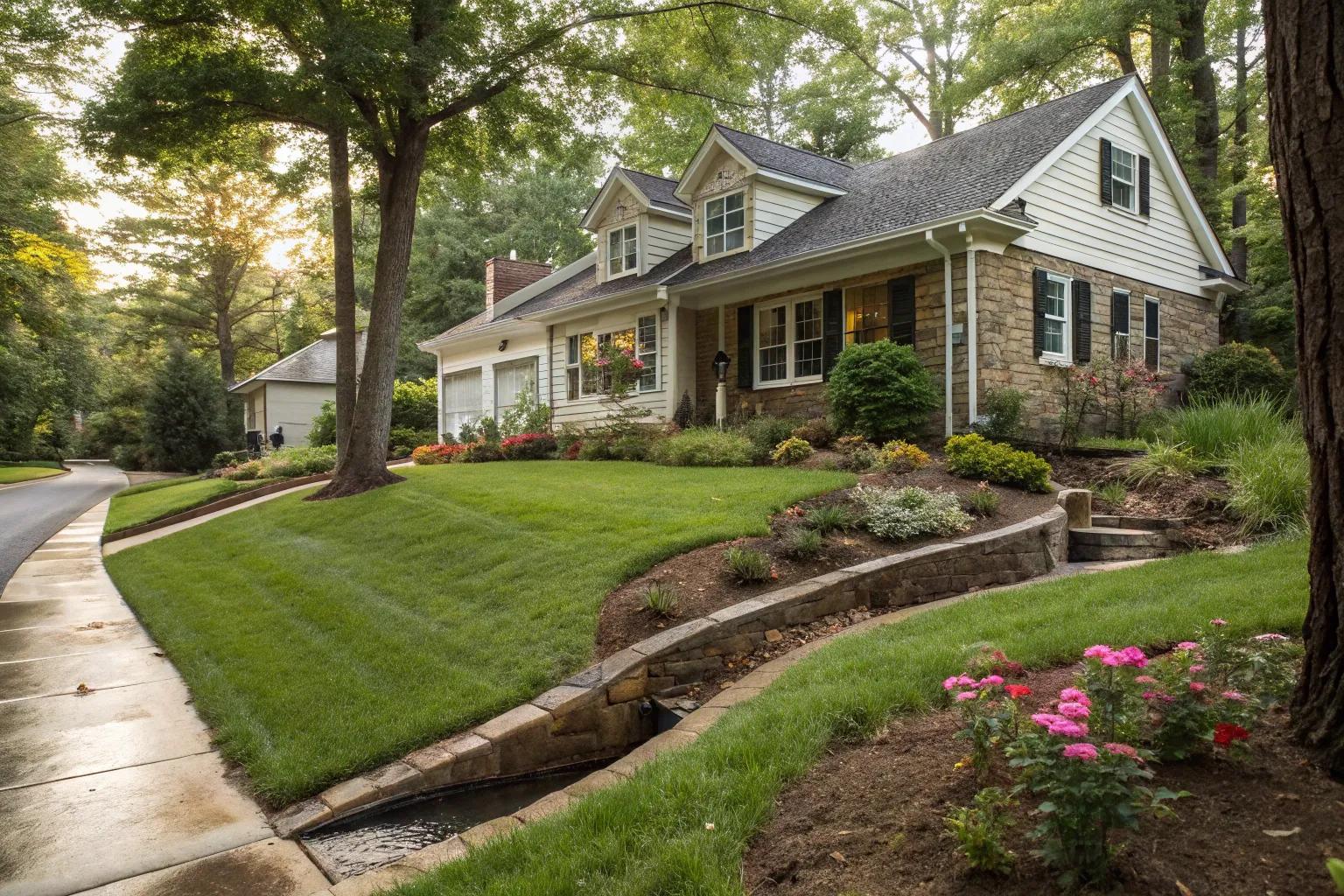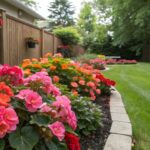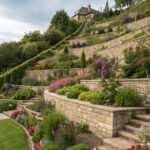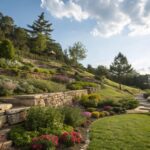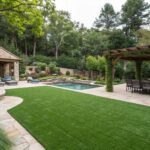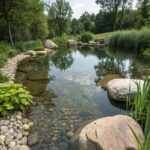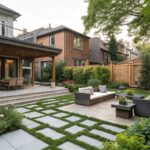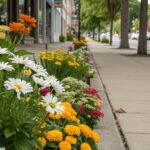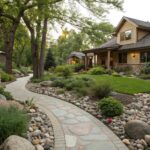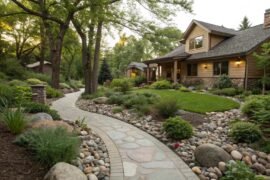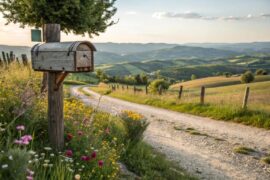Living in Austin, I’ve learned that managing water flow around your home is crucial to keeping it safe and sound. Let’s explore some creative and practical ways to divert water away from your house.
1. Install French Drains
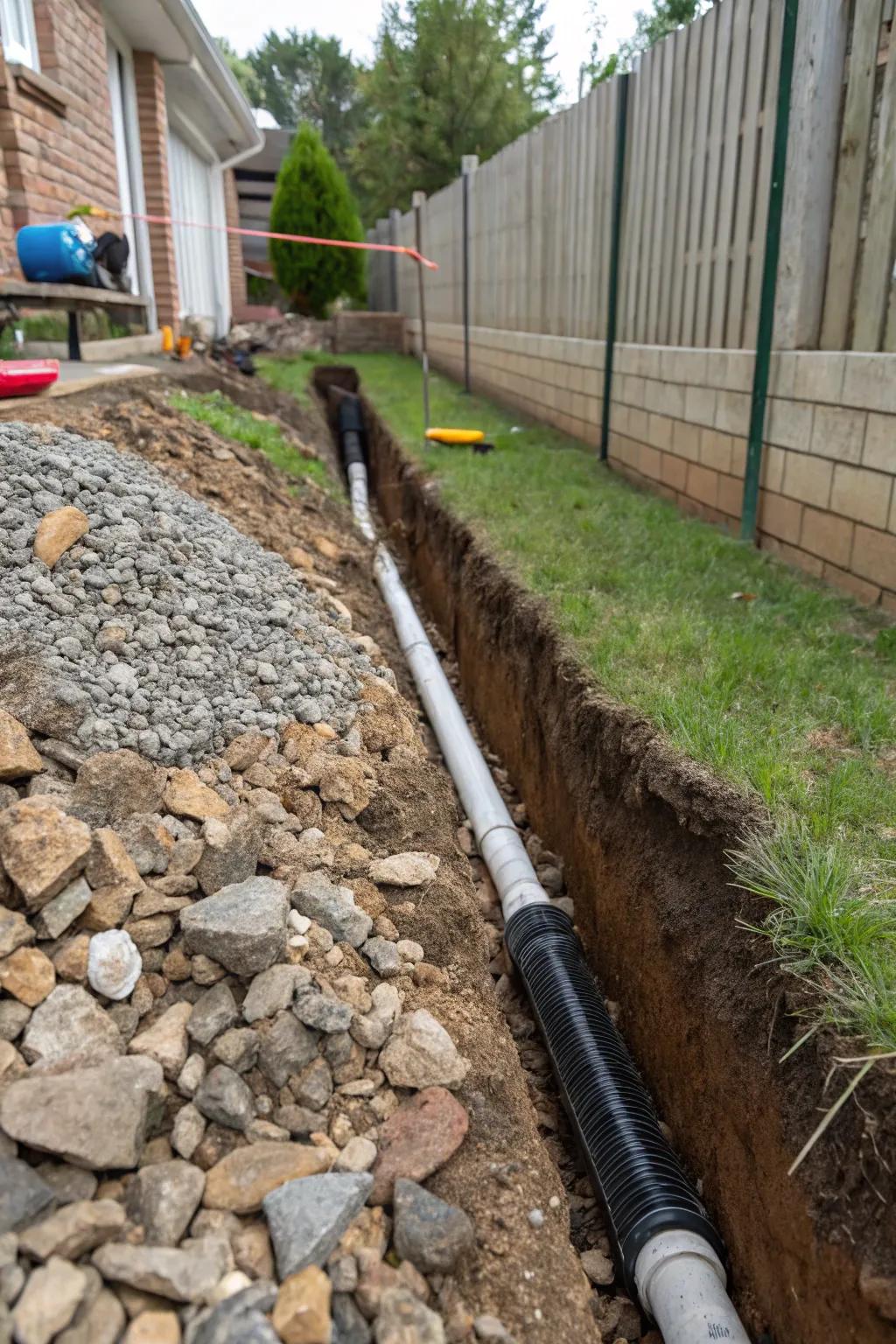
French drains are my go-to for handling heavy downpours, with their perforated pipes hidden under gravel. They whisk water away discreetly, keeping my foundation dry and intact. I’ve seen them work wonders for clients struggling with soggy yards. I always recommend a French drain as the first line of defense against serious water issues.
Possibly handy products:
- Perforated Drain Pipe: Effectively channel water away by installing this sturdy perforated drain pipe under your gravel.
- Drainage Gravel: Enhance water flow and prevent erosion with high-quality drainage gravel in your French drain.
- Geotextile Landscape Fabric: Protect your French drain from clogging with durable geotextile fabric for optimal filtration.
2. Install Permeable Paving
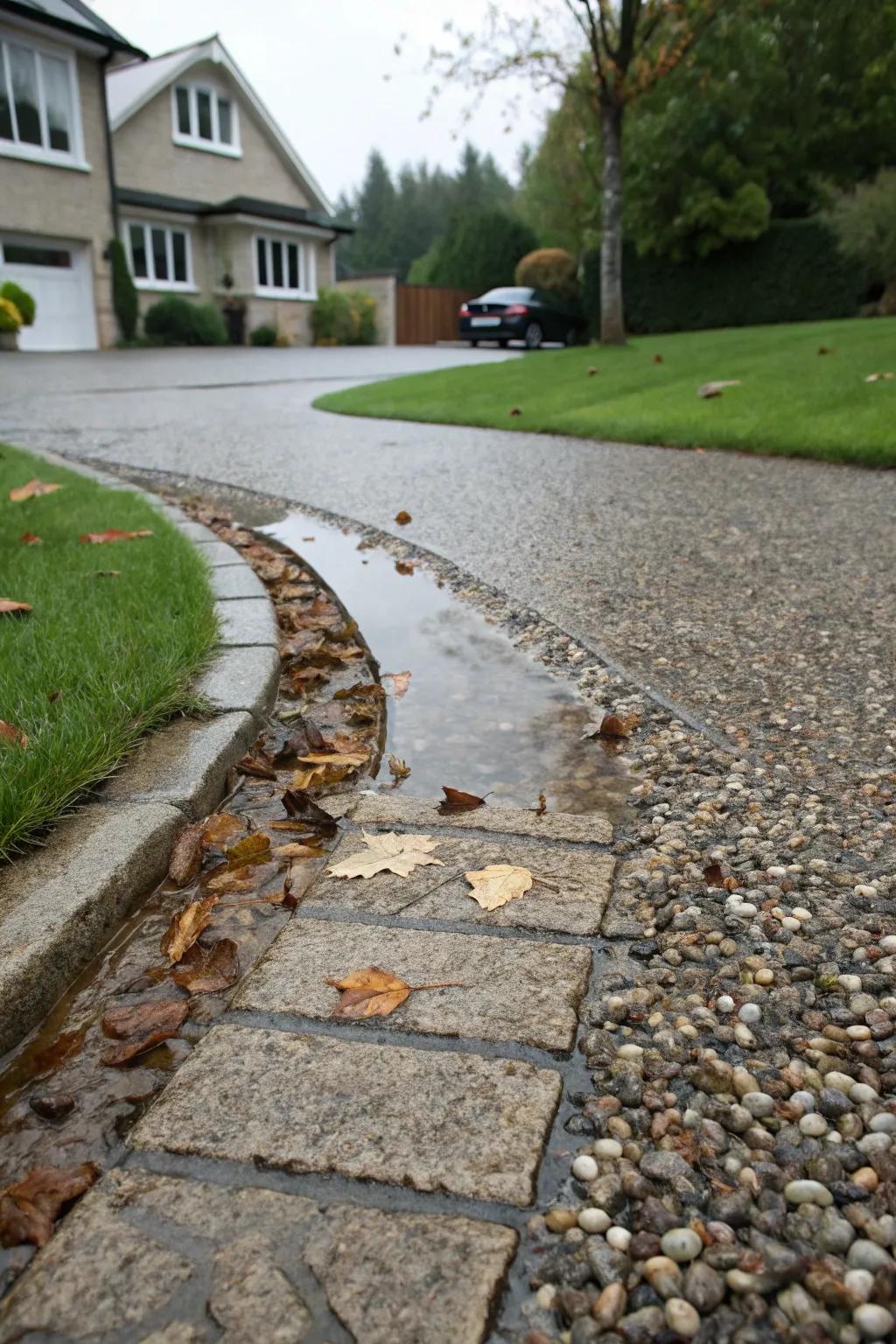
Permeable paving materials let water seep through, reducing runoff. It’s a fantastic eco-friendly option that keeps my paths puddle-free. I’ve found it particularly effective around pool areas, minimizing slippery surfaces. The aesthetic appeal is also a major plus, as it blends seamlessly with any landscape design.
Explore these options:
- Permeable Pavers: Upgrade your driveway with permeable pavers to minimize water runoff and enhance sustainability.
- Gravel Stabilization Grids: Ensure stability and drainage with gravel grids, perfect for eco-friendly landscaping projects.
- Patio Permeable Jointing Compound: Seal your permeable patio joints to allow water through while maintaining structural integrity.
3. Build a Swale
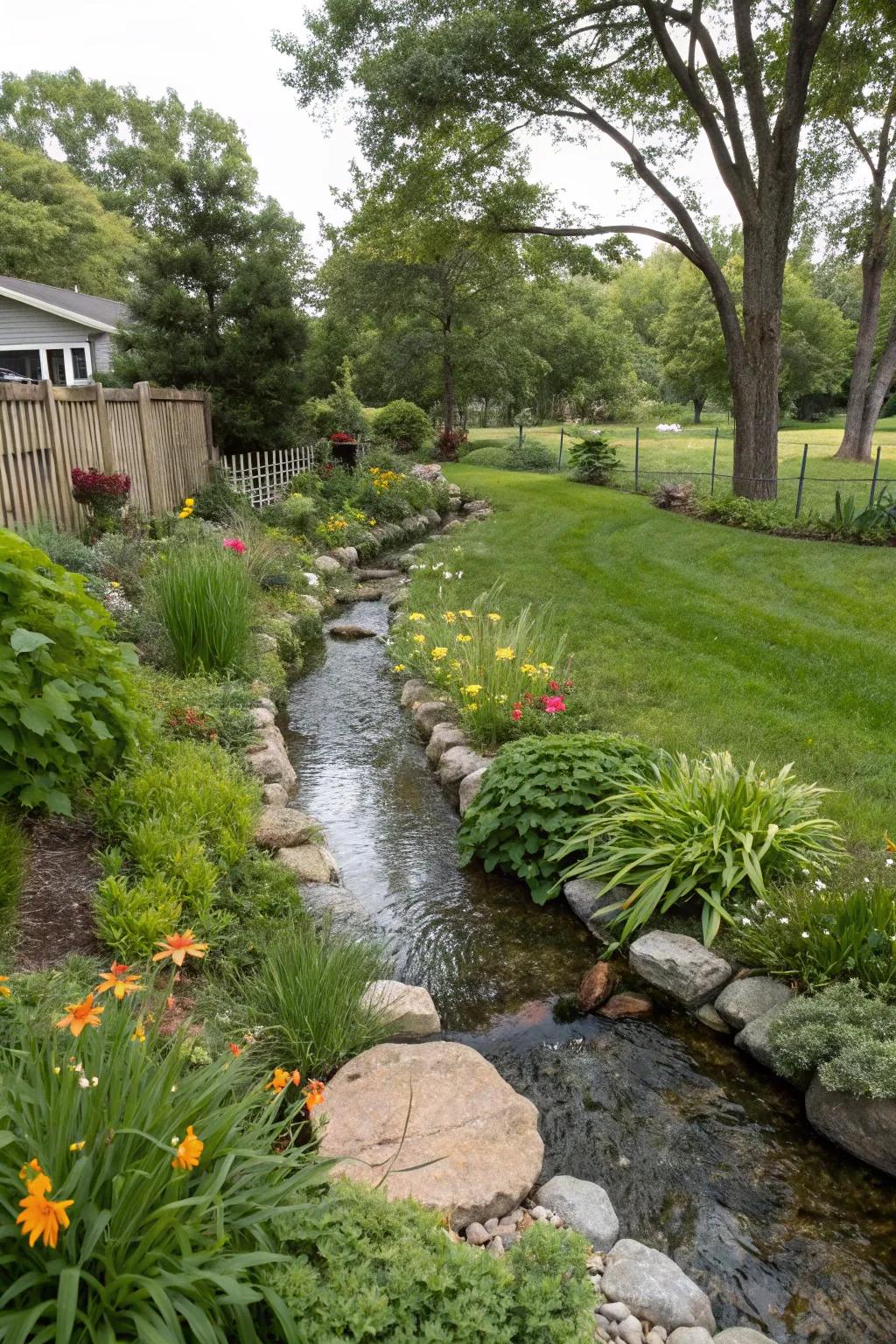
A swale is a gentle slope that channels water away, perfect for wide-open spaces. In my backyard, it works wonders in directing water through natural contours. I once designed a landscape that incorporated a swale disguised as a dry stream bed, much to the client’s delight. It is a fantastic way to blend functionality and aesthetic appeal.
Check if these fit your needs:
- Landscape Fabric: Use landscape fabric to control weed growth and stabilize soil in your swale construction.
- Decorative River Rocks: Enhance swale aesthetics and function with decorative river rocks for water flow management.
- Perennial Flowers: Add color and resilience to your swale with hardy perennial flowers for visual appeal.
4. Create a Dry Creek Bed
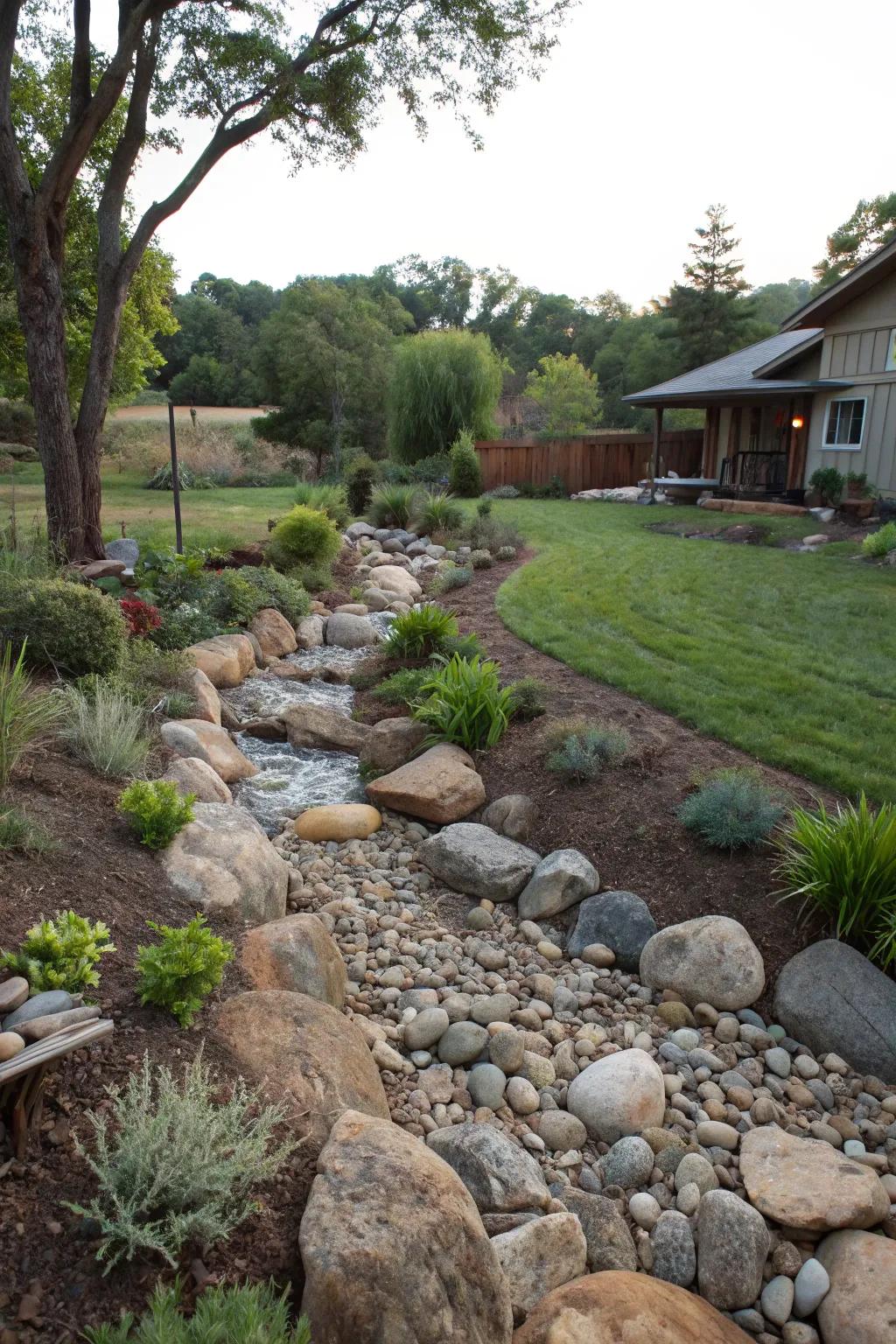
A dry creek bed is not just a beautiful addition to your landscape but also serves as a channel to redirect water. I love how it adds a natural look while efficiently guiding excess rain away from the house. I’ve designed several of these for clients looking to add a unique, natural element to their yards. The sound of trickling water after a rainfall is incredibly soothing.
These products might help:
- Landscape River Rocks: Enhance your dry creek bed with natural river rocks for efficient water flow and aesthetic appeal.
- Water-Resistant Weed Barrier Fabric: Lay down weed barrier fabric to maintain clean lines and minimize unwanted vegetation in your design.
- Decorative Garden Boulders: Add decorative boulders to your creek bed for a striking natural look and improved water diversion.
5. Construct a Berm
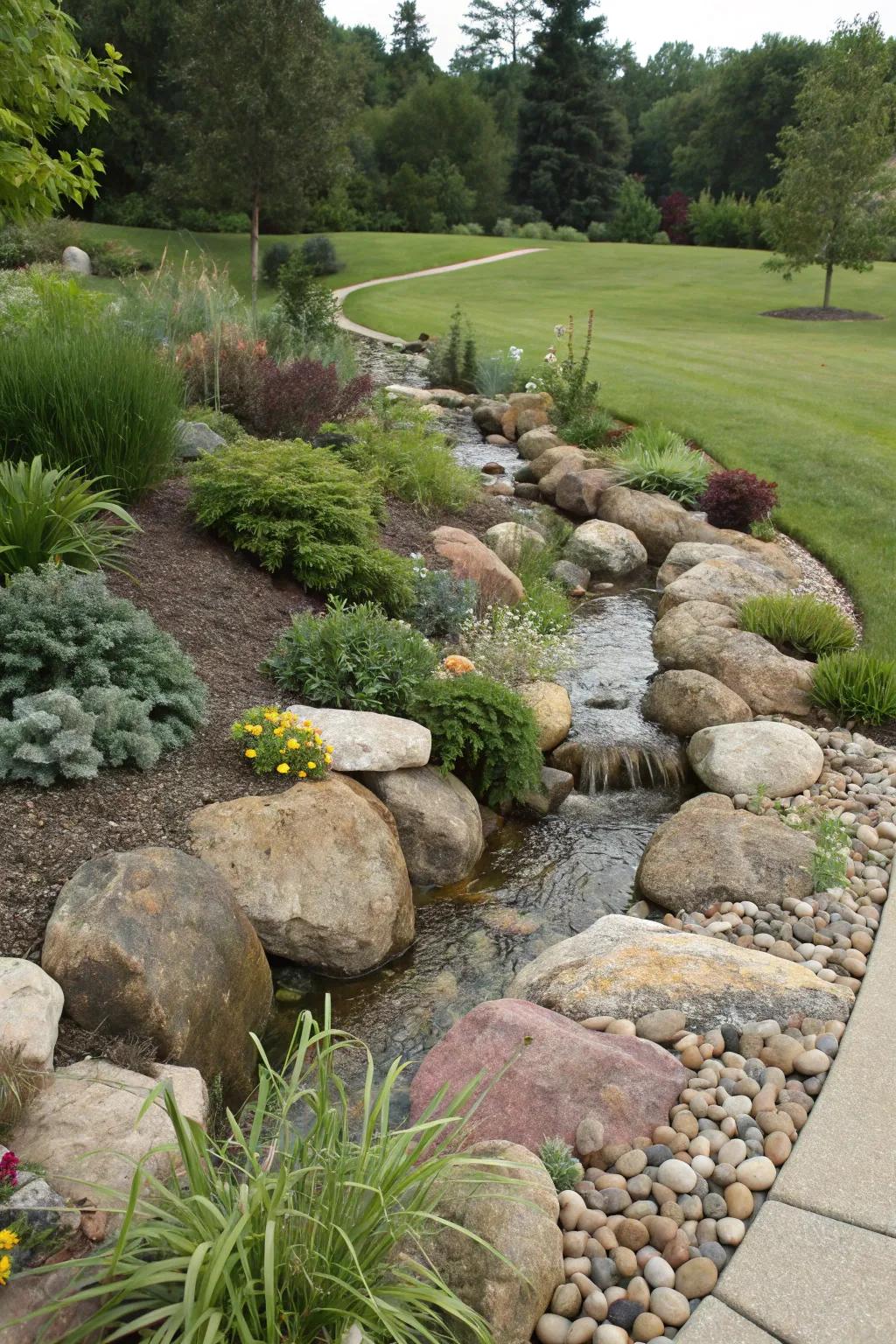
A berm is a raised area of soil that diverts water, useful if your property slopes towards your home. I find it a practical and decorative solution to water woes. I had one client whose property was constantly flooding their patio, but a well-placed berm completely solved the problem. I always try to incorporate native plants into berm designs to enhance their natural appeal.
Items that may come in handy:
- Garden Soil: Enhance your berm with nutrient-rich garden soil for thriving plants and effective water diversion.
- Landscaping Rocks: Use decorative landscaping rocks to stabilize and beautify your berm for long-lasting results.
- Berm Grass Seed Mix: Plant berm grass seed for lush coverage, preventing erosion and improving water redirection.
6. Try a Rock or Stone Border
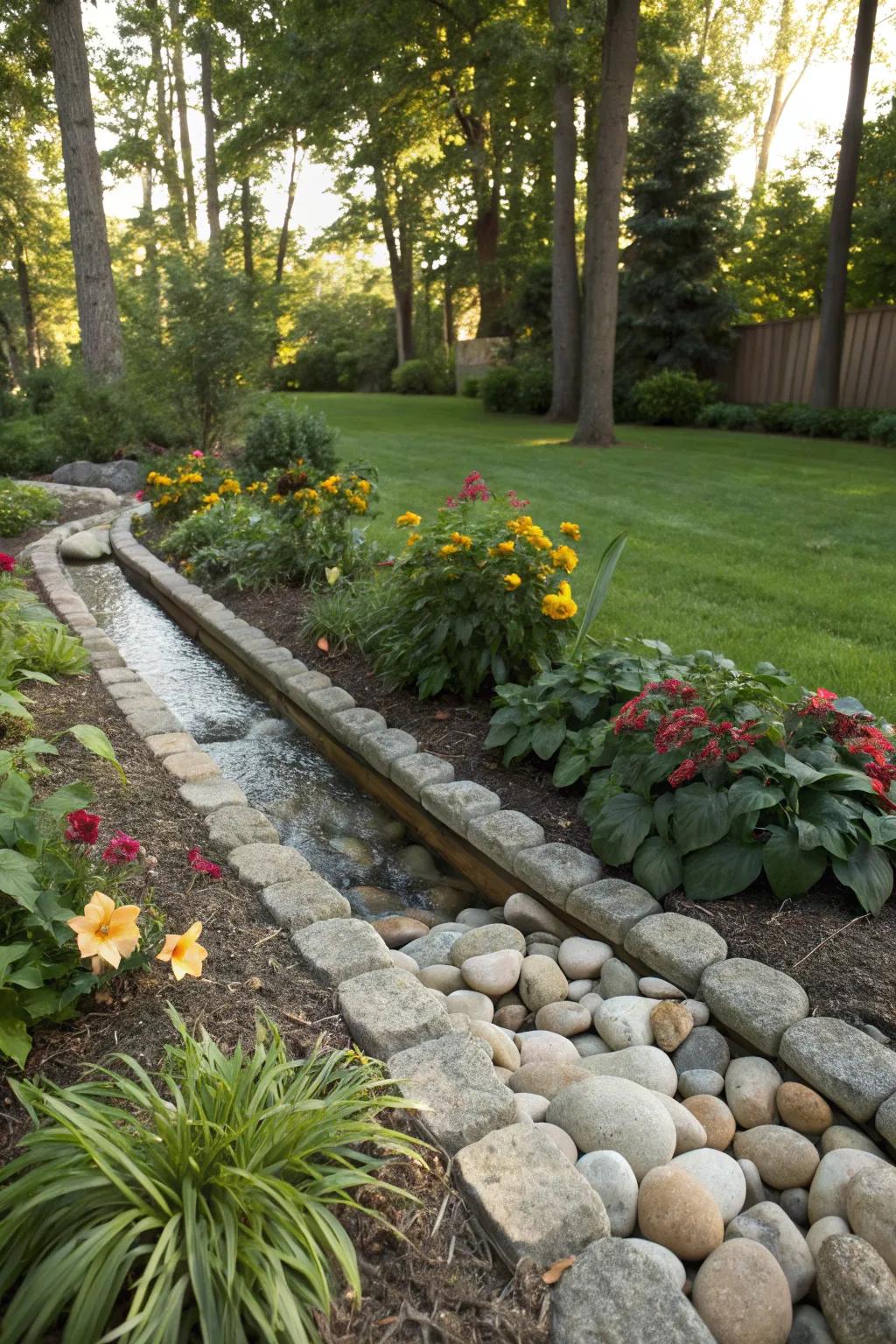
Adding a stone border around your garden beds can help divert water. I love the rustic touch it adds while functioning as a barrier against runoff. One of my clients used river stones for their borders, which gave the garden a lovely, natural feel. I’ve found that this simple addition can make a big difference in protecting plants from excessive moisture.
A few things you might like:
- Decorative Garden Stones: Enhance your garden’s natural beauty and manage runoff with these versatile decorative stones.
- Interlocking Stone Edging: Create a rustic yet functional border to manage water flow with interlocking stone edging.
- Garden Landscape Rocks: Add a charming stone border to your garden beds, effectively redirecting water away.
7. Build a Retaining Wall
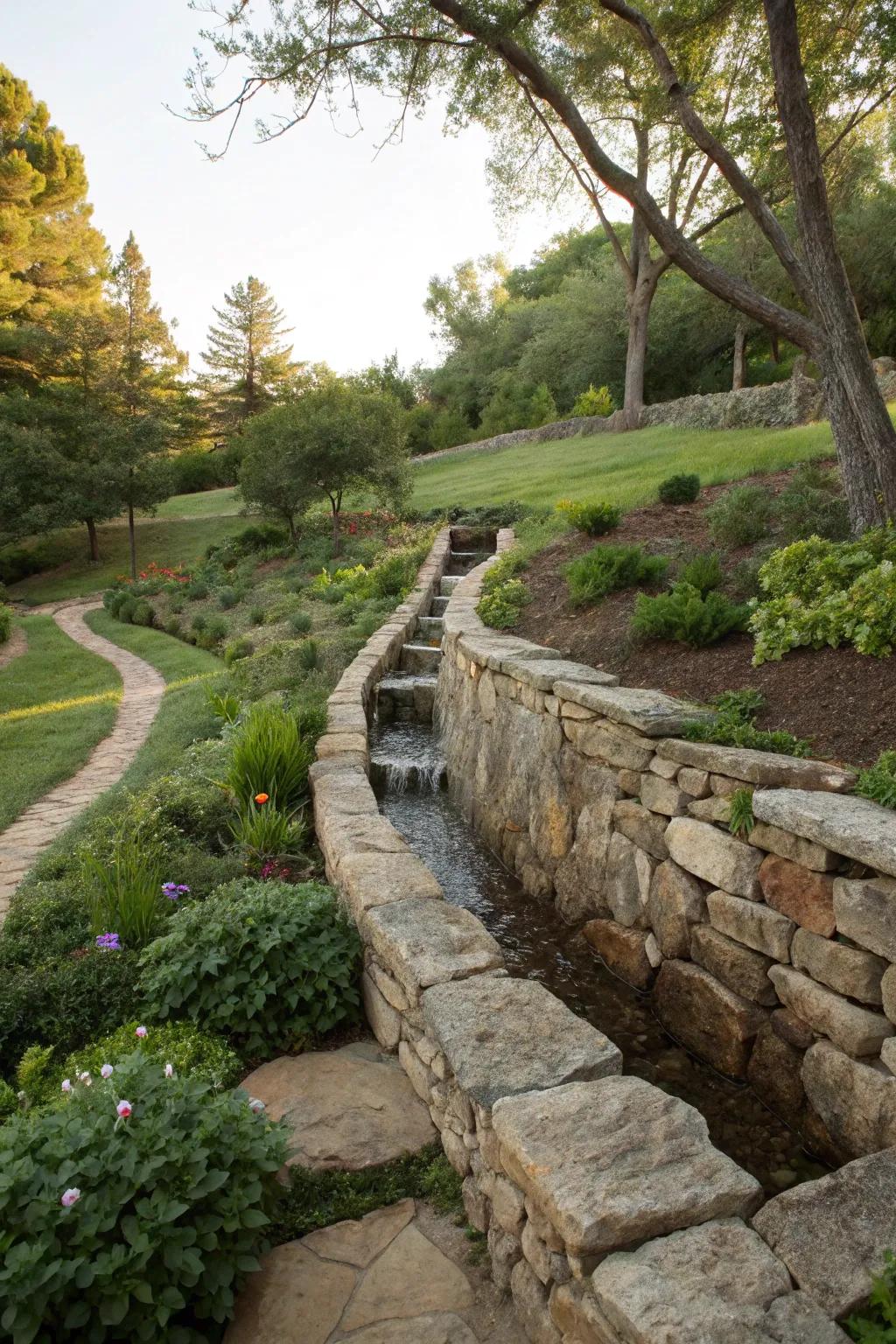
A retaining wall can control water flow and prevent erosion on sloped properties. I appreciate how it manages runoff while providing extra garden space. I’ve designed several retaining walls using natural stone, which adds a timeless elegance to the landscape. For me, a well-built retaining wall is a long-term investment in both property value and erosion control.
Check these products out:
- Landscape Fabric: Prevent soil erosion and maintain stability with durable, easy-to-install landscape fabric.
- Drainage Pipe: Ensure efficient water runoff with flexible and sturdy drainage pipe for your retaining wall project.
- Concrete Blocks: Build a strong retaining wall with reliable and robust concrete blocks for lasting support.
8. Install Downspout Extensions
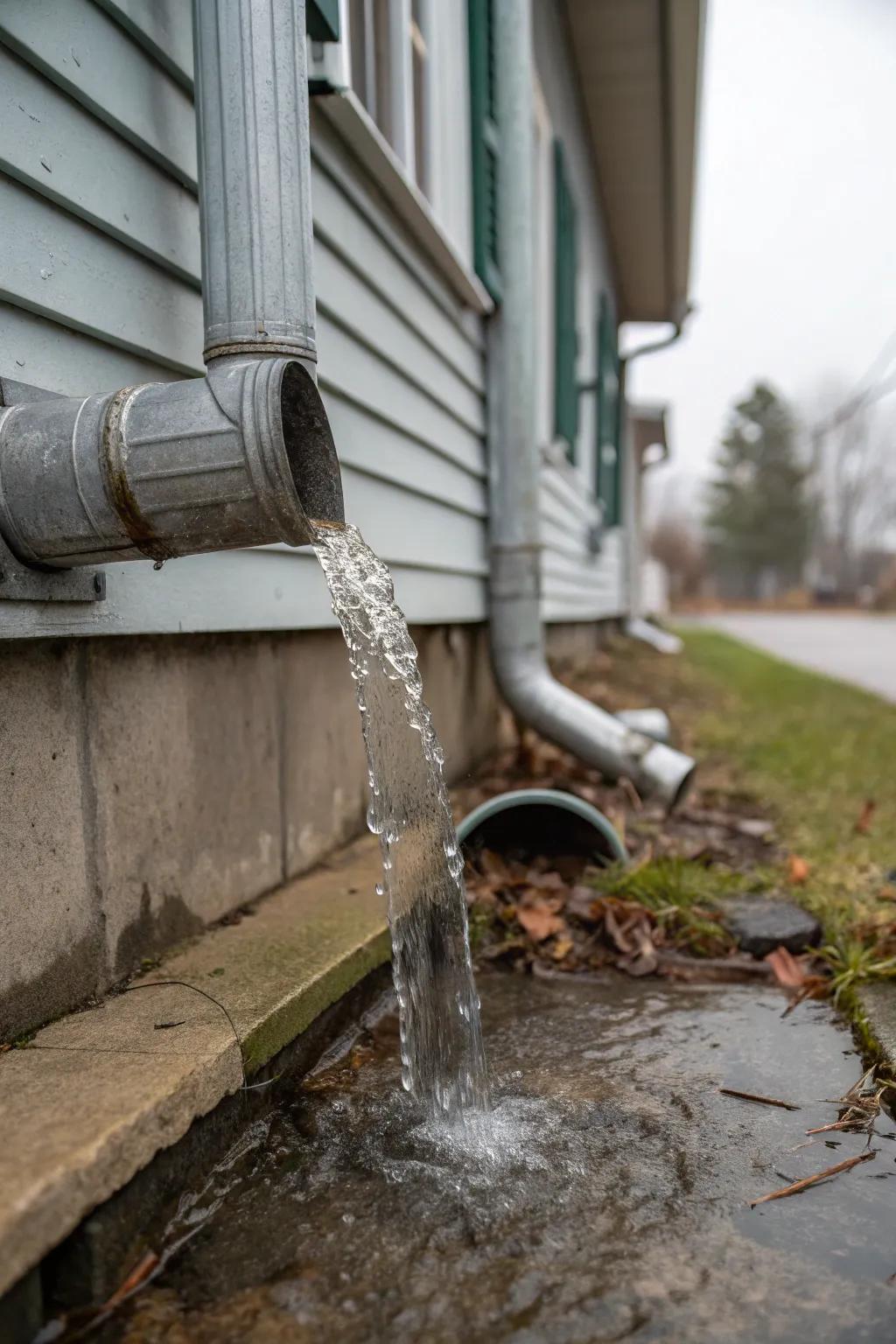
By attaching downspout extensions, you can direct roof runoff farther from your home. I find them a simple yet effective way to prevent water from pooling at the base. I always make sure the extensions are properly secured to prevent them from detaching during strong storms. I also recommend burying the end of the extension to further disperse the water.
A few suggestions:
- Flexible Downspout Extension: Easily guide rainwater away from your foundation with this flexible and durable extension.
- Adjustable Drainage Pipe: Prevent water damage by directing runoff with a versatile and adjustable drainage solution.
- Rainwater Diverter Kit: Effortlessly reroute rainwater from the roof to your garden with this efficient diverter kit.
9. Add Rain Barrels
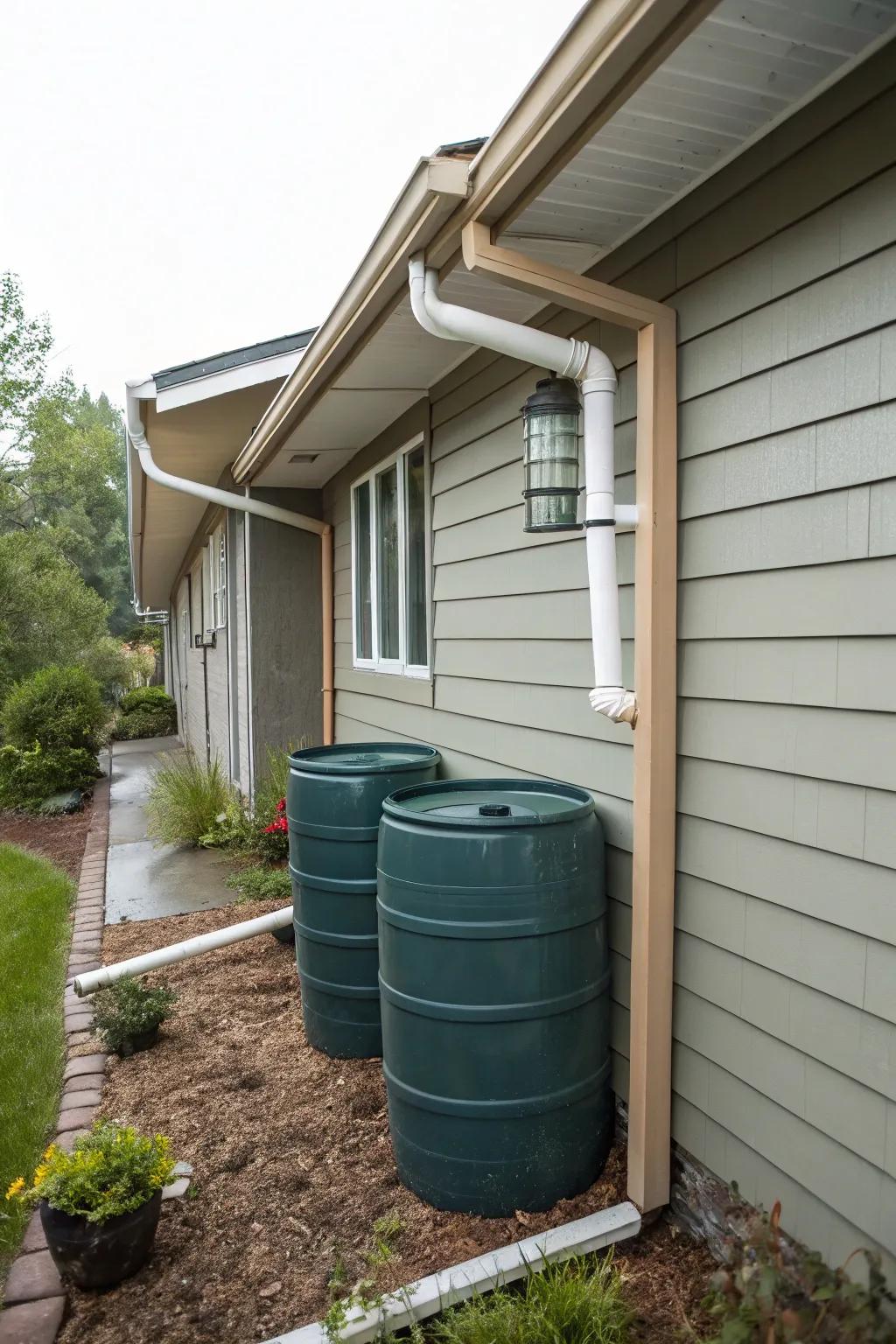
Installing rain barrels under downspouts allows you to collect and reuse rainwater. I enjoy using the stored water to hydrate my garden, reducing my water bill. One time, I helped a client set up a whole system of interconnected rain barrels, which significantly reduced their reliance on city water. I personally love the feeling of self-sufficiency that comes with using rainwater.
Possibly helpful picks:
- Rain Barrel Diverter Kit: Easily connect your downspouts to rain barrels for efficient water collection and garden use.
- Rain Barrel Stand: Elevate your rain barrel for better water flow and convenient access for garden hoses.
- Mosquito-proof Barrel Screen: Protect your rainwater from debris and pests with a durable, secure rain barrel screen.
10. Create a Rain Chain
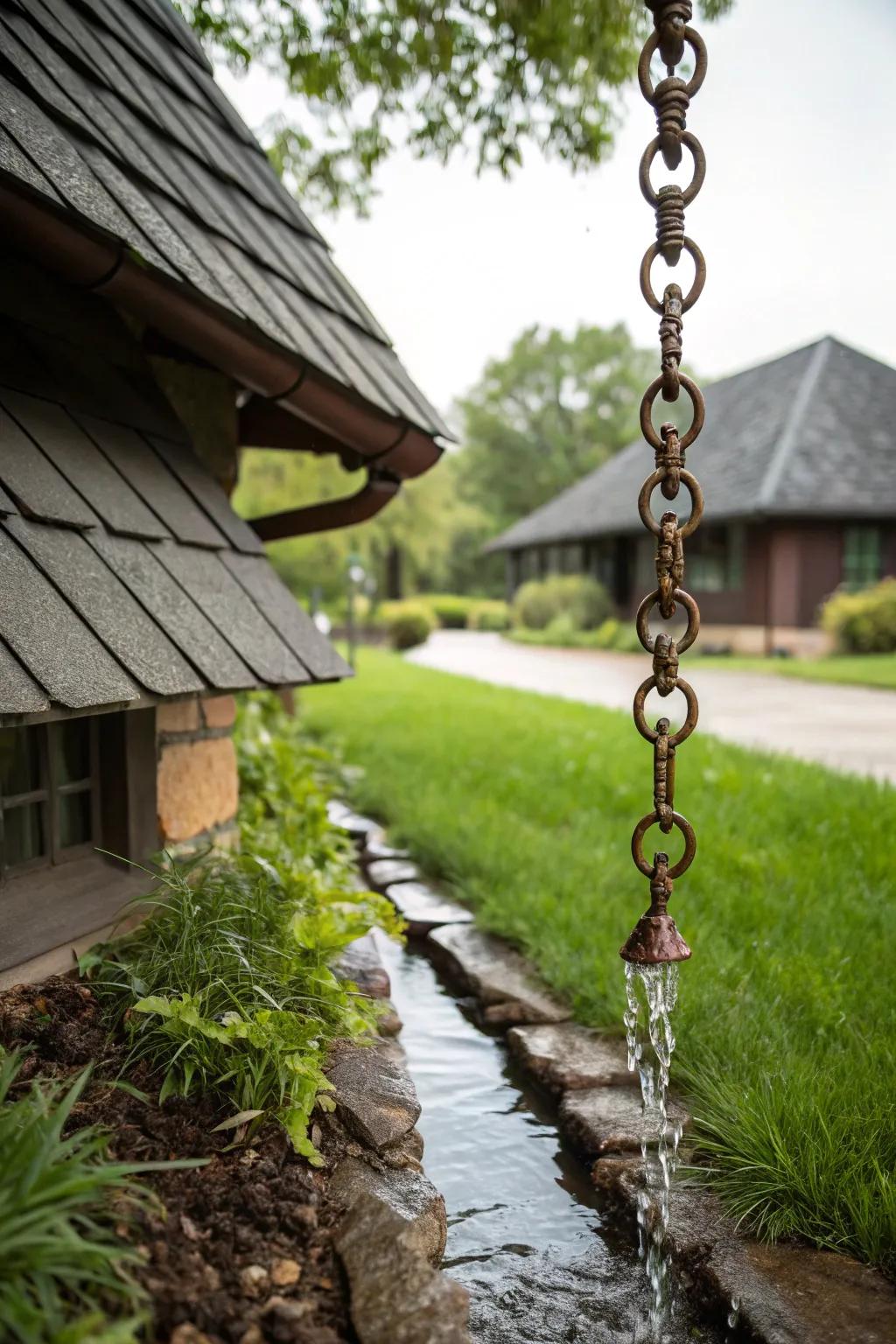
A rain chain transforms downspouts into a stunning water feature. Watching the water cascade down is a joy and a clever way to direct rain away from your home. I’ve seen clients replace their standard downspouts with decorative copper rain chains, adding a touch of elegance to their homes. I think the gentle sound of the water is incredibly relaxing.
A few choices to try:
- Decorative Rain Chain: Install a decorative rain chain to add elegance and functionality to your home’s exterior.
- Rain Chain Installation Kit: Simplify your rain chain setup with an easy-to-use installation kit and ensure secure attachment.
- Rain Barrel Diverter: Use a rain barrel diverter to efficiently manage and reuse rainwater around your home.
11. Install a Trench Drain
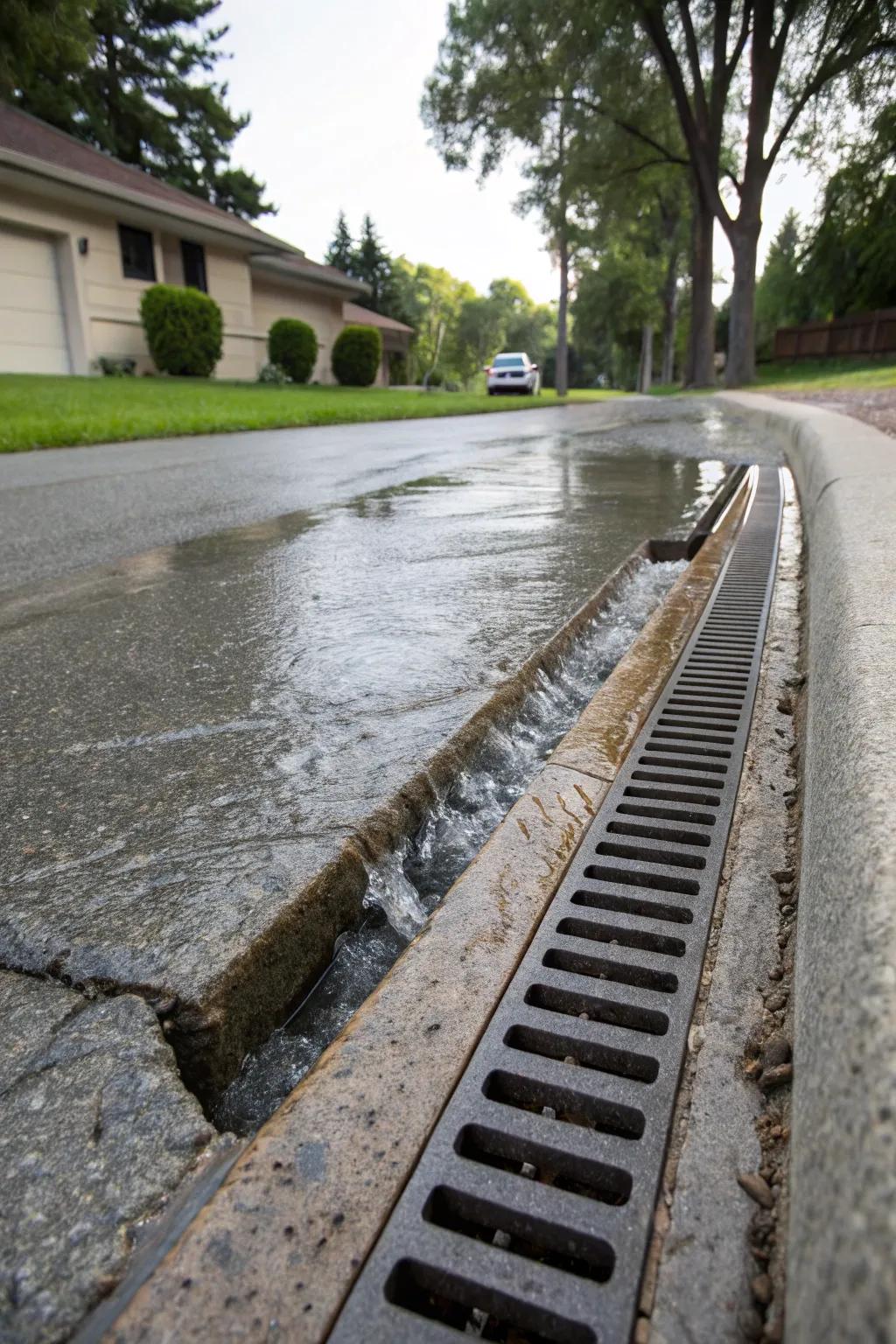
A trench drain is perfect for paved areas, catching water before it can pool. In my driveway, it’s a lifesaver during heavy rains. I recently advised a client to install one across their garage entrance to prevent water from seeping in. I now recommend them for every new driveway installation I oversee.
May just do the trick:
- Trench Drain System: Prevent water pooling with this durable trench drain system for effective water redirection.
- Grated Drain Cover: Keep debris out while allowing water flow with this sturdy grated drain cover.
- Drainage Channel Kit: Easily install this channel kit to efficiently manage water runoff from paved areas.

